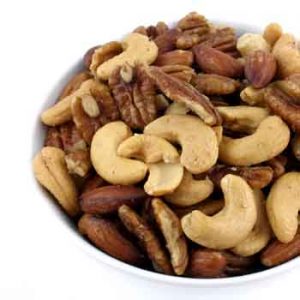
More evidence that low-calorie sweeteners are bad for your health
Studies show that artificial sweeteners can raise the risk of hypertension, metabolic syndrome, type 2 diabetes and heart disease, including stroke.

Natural Health News — A magnesium-rich diet could help reduce the risk of type 2 diabetes, heart disease and stroke, according to results from a new meta-analysis.
The study in BMC Medicine suggested that for those taking the highest magnesium doses there was a 10% lower risk of heart disease, 12% lower risk of stroke and a 26% lower risk of type-2 diabetes, compared to those taking the lowest dose.
They also found that upping your normal intake of magnesium by just an extra 100mg of magnesium per day could reduce stroke risk by 7% and type-2 diabetes by 19%.
To reach their conclusions researchers from Zhejiang University and Zhengzhou University in China used data from 40 studies carried out between 1999 and 2016. This data included over one million people from across nine countries.
“Low levels of magnesium in the body have been associated with a range of diseases but no conclusive evidence has been put forward on the link between dietary magnesium and health risks,” said Dr Fudi Wang, lead author and researcher from the school of public health at Zhejiang University.
“Our meta-analysis provides supports a link between magnesium in food and reducing the risk of disease.”
» An analysis, involving data from over a million people, has shown that increasing magnesium intake, even by as little as 100mg per day can have substantial health benefits.
» Those with the highest daily magnesium intake has a 10% lower risk of heart disease, 12% lower risk of stroke and a 26% lower risk of type-2 diabetes.
» The authors note that many in the industrialised world suffer from magnesium deficiency.
Previous evidence
Previous meta-analyses suggested the consumption of magnesium is associated with a reduced incidence of cardiovascular disease and diabetes. There is also evidence that people who eat more magnesium-rich foods can reduce their risk of stroke.
However, these studies have varied in sample size and magnesium intake, meaning there were inconsistencies in the literature.
A recent review also suggested some beneficial effects of using oral magnesium supplements for four months or longer. Specifically the research found magnesium improved insulin sensitivity and glucose control in both diabetic and non-diabetic subjects.
Deficiency is common
The European Food Safety Authority (EFSA) has set adequate intakes (AIs) of 350 mg/day for men and 300 mg/day for women. For children the AI ranged from 170 to 300 mg per day depending on age.
Magnesium can be found in many cheap and widely available fresh foods including nuts, beans, cocoa, whole grains and green leafy vegetables.
Even so, magnesium deficiency is common. A substantial proportion of the population (15-20%) in industrialised countries only get around a third of this amount. Among hospitalised patients magnesium deficiency is also common.
We don’t necessarily absorb magnesium well from supplements or food; only around 20-50% of what we take in gets used.A number of different factors affect magnesium bioavailability in the individual, including factors such as nutrient filtration by the kidneys, and varying levels of absorption caused by age, stress, certain diseases and individual differences.
Improving absorption
What this means is that levels in the body are not determined simply by choosing the best-absorbed magnesium among dietary or supplemental sources. While magnesium toxicity is rare, mega-dosing is never a good idea because it places an extra burden on the body, especially the kidneys, to deal with the excess.
There are some dietary adjustments that may help. For example the following foods increase magnesium absorption:
Some foods can also hinder magnesium absorption. These include:
With the above foods changing the way you prepare them can help. So, for example:

Please subscribe me to your newsletter mailing list. I have read the
privacy statement